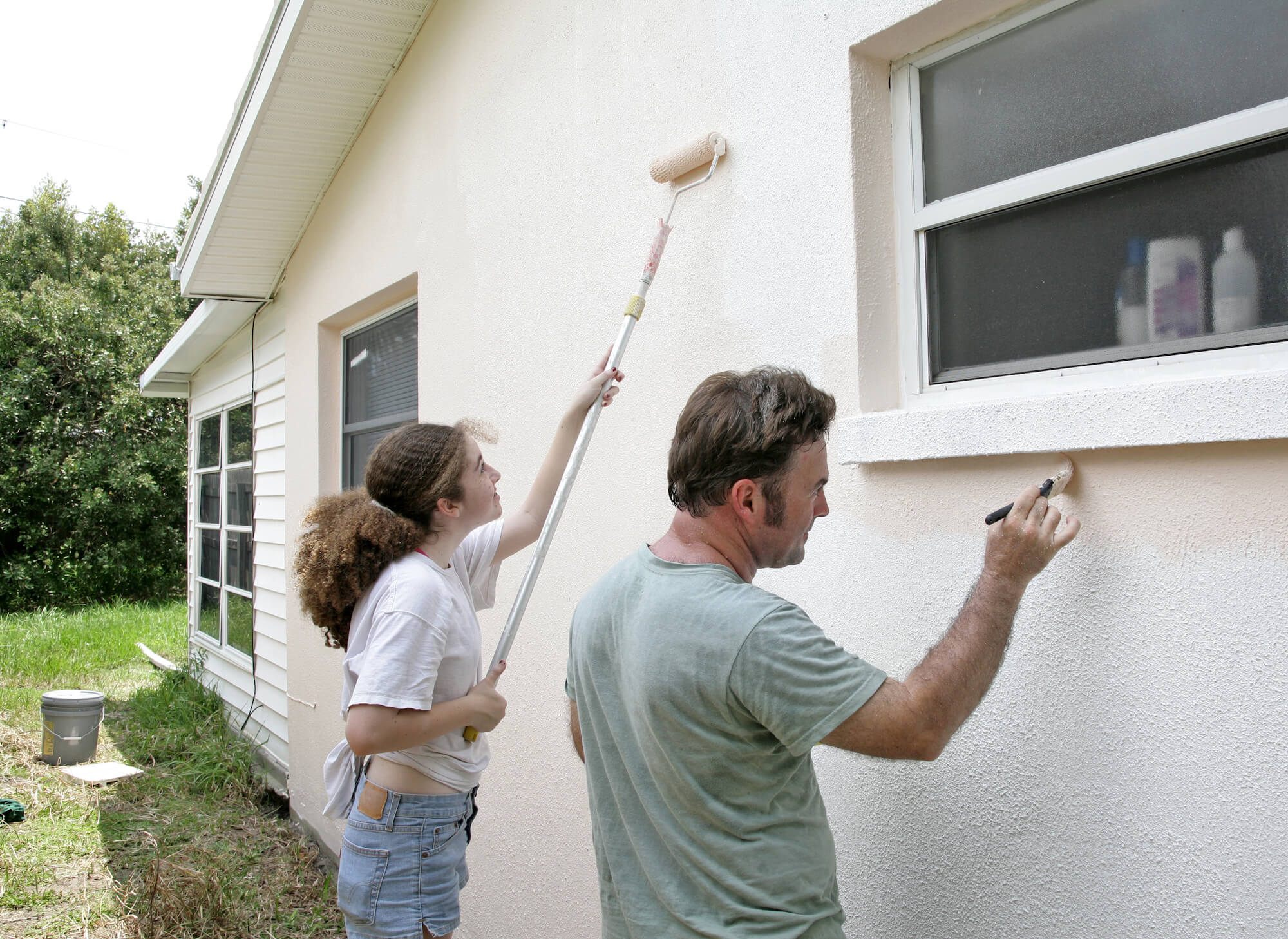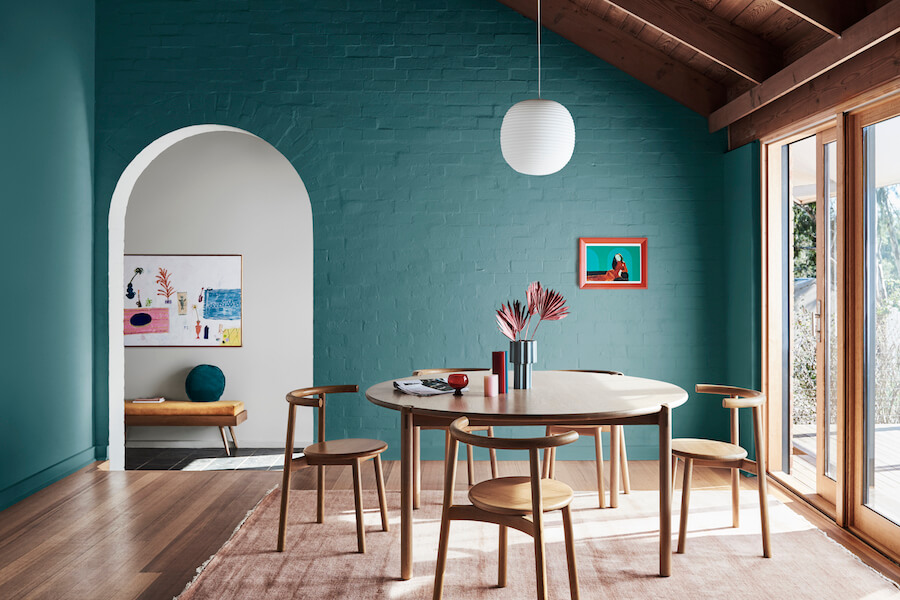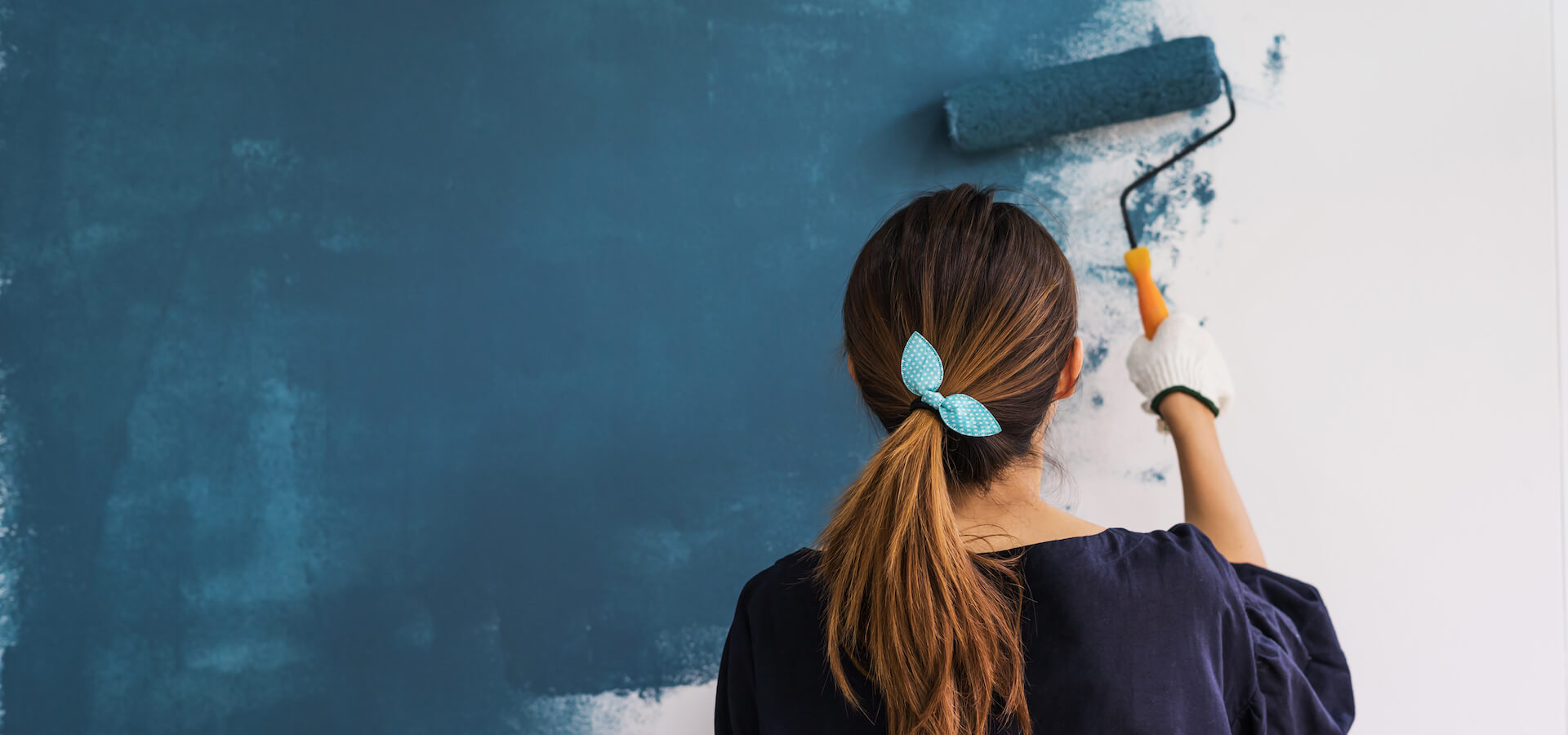One of the biggest decisions to make for a new (or newly renovated) house is the type of exterior walls you’d like. Otherwise known as cladding, there are several types of materials to choose from which are often used in combination. From brick and weatherboard siding to stone and fibre cement; the list goes on! Having said that, there are only a couple of cladding materials that are typically sought after for their raw, unique or simply beautiful appearance.
Apart from choosing the type of exterior wall, you have to think about painting it as well. While some types of cladding can remain unfinished to give your home exteriors a raw, natural look, there are others that need a coat of paint to boost kerb appeal. Of course, the end result of any paint job largely depends on the way you prepare the surface and the type of paint and method of application used.

Topics in this article:
Vinyl cladding
As an affordable material for house exteriors, vinyl cladding has become a very popular choice among homeowners looking for budget-friendly reno ideas. It is often left as is or purchased in the desired colour; however, vinyl cladding requires a touch-up paint job every few years. If you’re doing this yourself, use the instructions below to make sure that it’s done right.

- If a power wash of your vinyl cladding isn’t possible, make a solution of water and detergent and clean the siding with a clean rag/scrubber/brush.
- For mould or mildew, use a bleach-based product to remove.
- Rinse off the cleaner thoroughly and allow the surface to dry completely (24 plus hours of drying time is recommended).
Paint
- Always choose light shades for vinyl siding as dark colours absorb sunlight and cause warping.
- Matte paint is typically advisable to conceal any flaws in the siding; a gloss finish will highlight them.
- Use a spraying technique for an even application. You’ll need to cover surrounding areas of your home (ie. windows and plants) with plastic for this method to protect them from overspray.
Note: Priming is not necessary when a thorough cleaning of the surface is completed.
Brick
Federation and Victorian style houses remind us of days gone by, yet they never go out of style. There is something special and solid about houses with exterior brick that no other cladding material can match, which is why the proper finish is imperative to complete its gorgeous appearance. Here are some tips to help you achieve that.

Clean/prep
- Remove mildew with water and bleach (3:1 ratio) by dampening the surface with this mixture every 30 minutes (two to three times) and scrubbing with a wire brush.
- Clean up other types of residue on the brick with detergent and water using a medium-bristled brush.
- To clean efflorescence, scrub the surface with an abrasive brush or wire brush; if the stain is persistent, call in a professional for its safe removal.
- Rinse the brick thoroughly to remove the cleaner.
- When dry, remove dust from cracks and seal them using a silicone filler.
Prime
- Make sure that the brick is completely dry before priming.
- Specially formulated latex primers for exterior masonry cladding is highly recommended.
- An exterior brush or roller for masonry surfaces can be used for the application.
Paint
- Choose high-quality masonry paint or 100 per cent acrylic latex paint.
- The fastest, easiest and most efficient way to paint brick is with a paint sprayer; this is typically advised for a more natural finish.
- For a thicker application that will properly conceal the pores of the cladding material, use a roller with a thick nap.
Wood
A typical weatherboard or Queenslander home with wood trim and a rocking chair on the front porch is not only a beautiful home to raise a family in, but an awesome one to retire in as well. If you’d like to transform raw wood cladding or refresh a peeling timber exterior use the following tips for desired results.

Clean/prep
- Scrape off any existing finish on the surface with a wire brush (stroke in the direction of the wood grain).
- Smooth the wood by sanding it down with either medium or fine grit sandpaper (the latter is recommended for a glossy finish).
- If cleaning is required, dip a soft-bristled brush in a mixture of mild detergent and water and gently scrub away sand and dirt.
- A weak solution of ammonia and water can be used to treat mould and mildew.
- Rinse the surface thoroughly and allow it to dry for the next 48 to 72 hours.
Prime
- Use a wood or latex primer that is specially formulated for exterior wood.
- A regular paint brush or roller can be used for an even application.
Paint
- For better protection of the wood cladding, a gloss or semi-gloss paint is advised.
- Matte paint is generally used to conceal blemishes in the wood; however, it is more prone to mildew.
- Avoid oil-based paint if you have used a latex primer as the colour won’t catch.
- A paint brush is preferred for applying paint on external wood.
Stucco
If you’d like a predominantly textured exterior, stucco is the way to go. It is a sand-cement plaster that gives your home a Mediterranean style exterior; however, the downside is that it’s rather tough to prep unfinished stucco. Nevertheless, here are some tips that will help make it easier for you.

Clean/prep
- A power wash or thorough brushing with wet bristles is required to remove debris.
- Brushing can be done with a solution of detergent and water for a thorough clean.
- Rinse the surface thoroughly and allow it to dry completely.
- Any cracks must be filled and sealed; work the sealant into the stucco to avoid smooth lines after painting.
Prime
- A high-quality masonry primer for exteriors is recommended.
- Apply the primer with a paint sprayer to avoid back rolling.
- If you’re using a roller brush, choose a thick nap.
- It’s ideal to choose a coloured primer that will match your chosen paint to eliminate the need of more than one coat.
Paint
- 100 per cent acrylic latex paint is advised for stucco cladding.
- Matte paint works best for a more natural look; however, semi-gloss paint helps to protect the material more.
- Like the primer, a paint sprayer or roller brush with a thick nap is advisable for an even finish.
- Paint must be applied quickly as stucco dries up faster than most types of cladding material.
NOTE: Proper paint gear (including eye gear) must be worn when performing any type of house painting task.
Bear in mind that prepping and painting exterior walls is no walk in the park. It requires patience, careful efforts and, more importantly, the right products, tools and techniques. If you aren’t confident in following the pro tips that we’ve shared with you today, hire a trusted professional painting company to paint your cladding just the way you desire.





Thank you so much for your preparation tips before painting over a brick house wall, especially the tips about scrubbing the brick properly without damaging it. My father’s farmhouse is one of his most prized works as he maintained it for many years even if it was made with some nice-looking but very brittle brick material. We wanted to repaint it to give it a new look before the holidays, but we also wanted to be very careful so we won’t waste all his hard work. With that in mind, we’ll follow your tips on cleaning it before getting a painting service to help us out.